If you’re a business owner, then you’ve probably heard of the Net Promoter Score (NPS). But what is it, and why should you care? In this post, we’ll explain NPS and discuss its benefits for measuring customer satisfaction. We’ll also share some tips on how to improve your NPS score. Keep reading for all the details!
What Is a Net Promoter Score (NPS)?
Net Promoter Score (NPS) is a customer loyalty metric that measures how likely customers are to promote a company’s products or services. Customers are asked to rate their level of satisfaction on a scale from 0 to 10, and they are then classified as “promoters” (9-10), “passives” (7-8), or “detractors” (0-6). The NPS is calculated by subtracting the percentage of detractors from the percentage of promoters.
The NPS is often used to measure customer satisfaction, but it can also be used to gauge employees’ engagement with their work and assess the health of a company’s culture. In recent years, the NPS has become increasingly popular for measuring and managing customer relationships.
While the NPS is a valuable metric, it is important to remember that it should not be used as the sole determining factor in making decisions about a company’s products or services. Instead, the NPS should be one of several factors that are considered when making strategic decisions.
How Can Businesses Use NPS To Improve Customer Loyalty And Satisfaction Levels?
Businesses can use NPS to improve customer loyalty and satisfaction levels by surveying customers and using feedback to make changes that improve the customer experience. The NPS system is based on a scale of 0-10, with customers who score 9 or 10 considered “promoters,” those who score 7 or 8 considered “passives,” and those who score 6 or below considered “detractors.”
There are a lot of benefits of tracking the Net Promoter Score.
- Net Promoter Score can help businesses track customer loyalty over time and identify areas where they need to make improvements.
- It can help businesses understand what customers are satisfied with and what they need to work on.
- It can help businesses measure customer satisfaction and loyalty after a service interaction or purchase.
- It can help businesses create goals for improving customer loyalty.
- It can help businesses track the effectiveness of their marketing campaigns and customer service initiatives in relation to customer loyalty.
By using NPS, businesses can ensure that they are making the changes that matter most to their customers and improving customer loyalty and satisfaction.
Net Promoter Score Scale: Detractors, Passives, Promoters
Companies use the Net Promoter Score scale to measure customer satisfaction. It is based on the question, “How likely is it that you would recommend our company/product/service to a friend or colleague?” Customers are asked to rate their answers on a scale of 0 to 10, with 0 being the least likely and ten being the most likely.
The scale is divided into three categories:
Detractors:
Customers who answer 0-6 are considered detractors. They are unhappy with the company and are unlikely to recommend it to others.
Passives:
Customers who answer 7-8 are considered passive. They are satisfied with the company but could be more loyal and enthusiastic.
Promoters:
Customers who answer 9-10 are considered promoters. They are highly satisfied with the company and will likely recommend it to others.
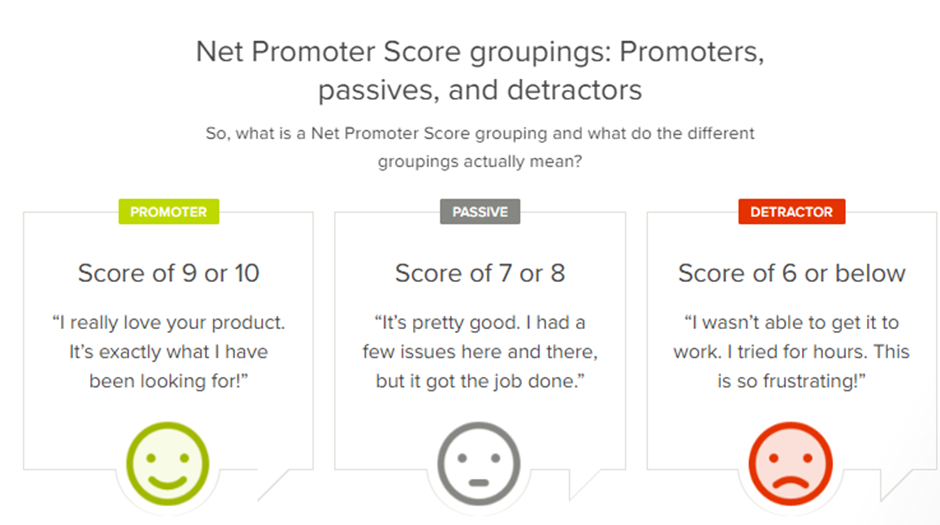
How To Calculate Net Promoter Score?
A company’s Net Promoter Score (NPS) can be calculated using a simple formula: the percentage of customers who are promoters minus the percentage of customers who are detractors. This number can range from -100 to 100, with a positive score indicating that more customers are promoters than detractors and a negative score indicating the reverse.
While NPS is often used as a general measure of customer satisfaction, it can also track specific touchpoints in the customer experience. For example, a company might track NPS scores at different points in the sales process or after a customer has interacted with customer service.
To calculate your Net Promoter Score, subtract the percentage of Detractors from the percentage of Promoters. For example, if 50% of respondents are Promoters, 10% are Detractors, and 40% are passives, your NPS would be 50-10=40.
Total % of promoters – total % of detractors = net promoter score
You will notice that the percentage of passives is not used in the formula.
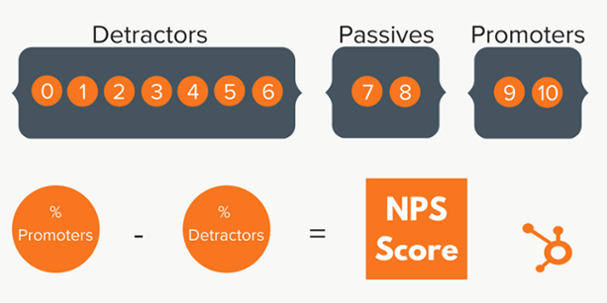
What Is A Good Net Promoter Score?
An NPS of 0 to 30 is considered “good.” A score of 70 to 100 is considered “excellent,” and anything above that is considered “world-class.” Scores below 0 are possible but rare.
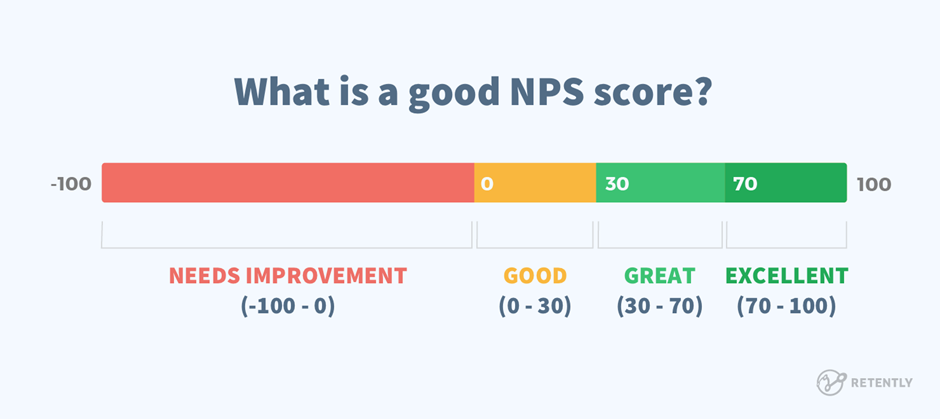
The Net Promoter Score of the best companies in the world varies, but some notable examples are Apple with a score of 87, Amazon with a score of 85, and Netflix with a score of 81.
NPS varies by industry
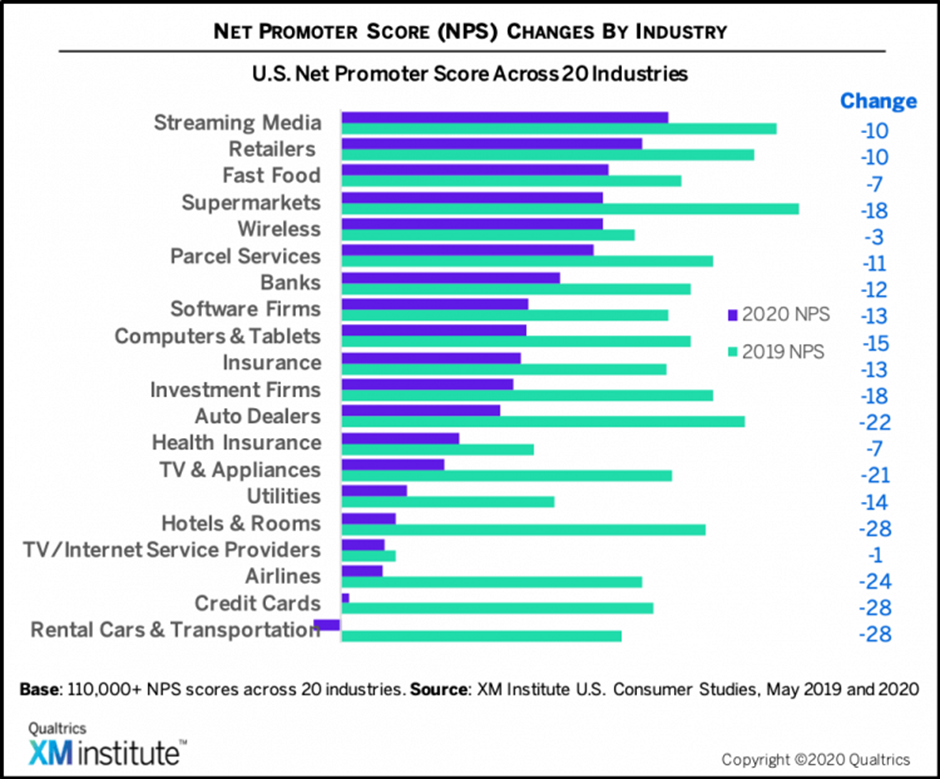
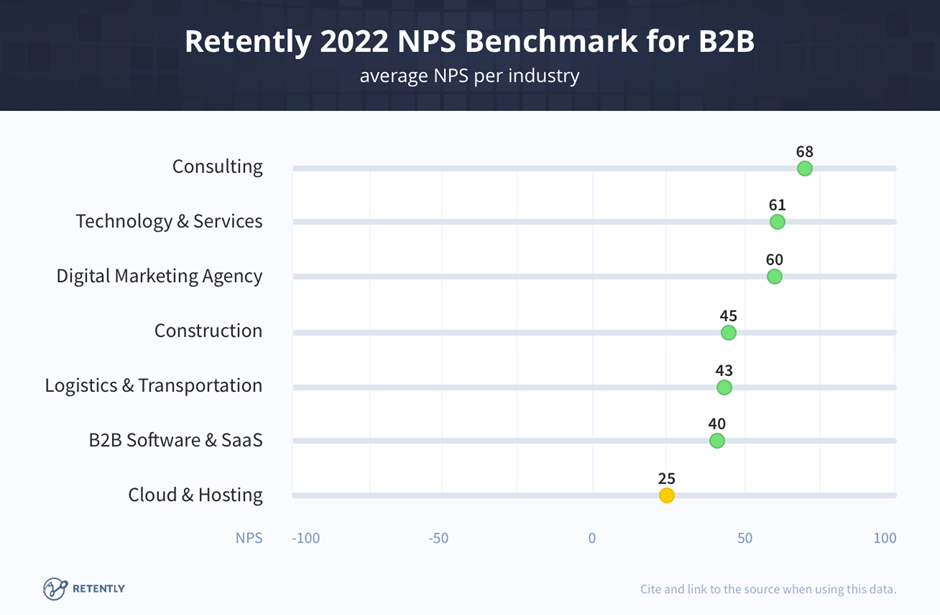
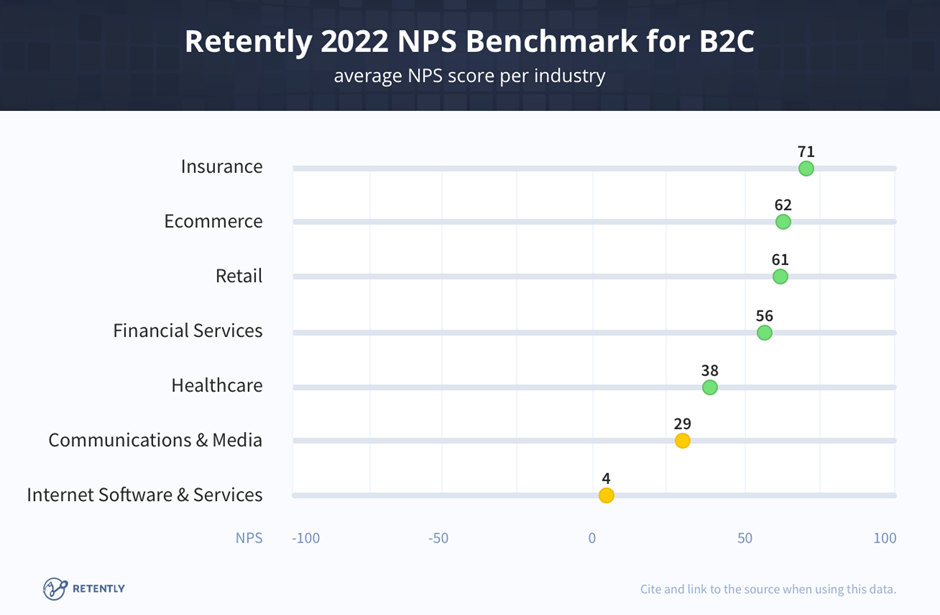
How To Collect NPS Feedback?
One of the most important things you can do to ensure the success of your business is to collect feedback from your customers regularly. NPS surveys are a simple way to collect customer feedback and can be used to gauge customer satisfaction, loyalty, and advocacy.
To collect NPS feedback, you will need to send out a survey to your customers and ask them to rate their experience on a scale of 0-10. If you’re not sure how to collect NPS feedback, here are a few tips:
Use an online survey tool
There are several online survey tools that you can use to collect NPS feedback. Some of these tools include SurveyMonkey, Typeform, and Google Forms.
Send the survey to your customers.
Once you’ve chosen a survey tool, you will need to send the survey to your customers. You can do this via email, social media, or your website.
Ask your customers to rate their experience.
In the survey, you will need to ask your customers to rate their experience on a scale of 0-10. You should also ask them to leave a comment explaining their rating.
Use the feedback to improve your business.
Once you’ve collected the NPS feedback, you can use it to improve your business. You can use the feedback to make changes to your products and services and your customer service.
What are the steps to calculate your NPS?
There’s no one-size-fits-all answer to this question – the best way to create an NPS survey will vary depending on your specific business goals and needs. However, there are a few key steps that all businesses should take when creating an NPS survey.
First, determine what information you want to collect from your customers. This will help you determine the overall structure of your survey.
Next, develop a set of survey questions that will allow you to collect the desired information. Keep your questions concise and direct, and avoid asking leading or multiple-choice questions.
Finally, choose a method for distributing your survey to customers (e.g., via email, paper surveys, or in-person interviews). Once you’ve collected responses, analyze the results and take action based on your findings.
Following these steps, you can create an effective NPS survey to help you understand and improve customer satisfaction.
Survey Monkey explain how you can calculate your Net Promoter Score.
- Send the Net Promoter Score Questionnaire to your target demographic.
- Download your survey responses into an Excel spreadsheet.
- Within your spreadsheet, identify your respondents as Detractors, Passives and Promoters by adding up the total responses from each classification.
- Generate the percentage total of each group by taking the group total and dividing it by the total survey responses.
- Subtract the percentage total of Detractors from the percentage total of Promoters and this is your NPS.
NPS feedback is a valuable tool that can help you improve your business. If you’re unsure how to collect NPS feedback, follow these tips.

